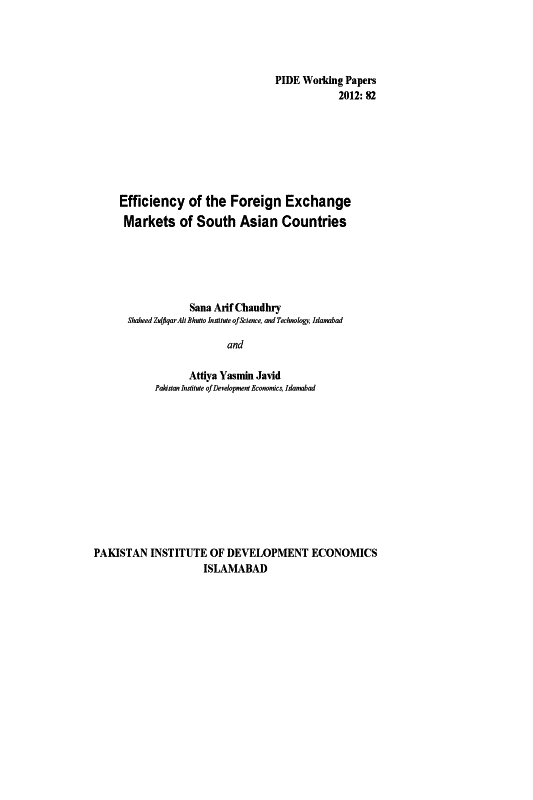
Pakistan Institute of Development Economics
- Home
Our Portals
MenuMenuMenuMenuMenuMenuMenu - ResearchMenuMenuMenuMenuMenuMenuMenu
- Discourse
- The PDR
- Our Researchers
- Academics
- Degree Verification
- Thesis Portal
- Our Portals
Efficiency of the Foreign Exchange Markets of South Asian Countries
The purpose of this study is to test for the weak and semi-strong form efficiency of four of the seven foreign exchange markets of South Asia; namely, Pakistan, India, Sri Lanka and Bangladesh; using three bilateral foreign exchange rates. Weak-form efficiency is examined using unit root tests (Augmented Dickey Fuller and Phillips Perron), while semi-strong form efficiency is tested using co-integration and Granger causality tests. Variance Decomposition Analysis is also employed to study the trends of the exchange rates beyond the sample period. Average monthly spot exchange rates for the US dollar, the British pound and the Japanese yen for the period January 1995 to December 2010 are used. Results of indicate that all four foreign exchange markets are consistent with the weak-form of the Efficient Market Hypothesis. However, the results provide evidence against the semi-strong version of the Efficient Market hypothesis. The results of cointegration after introducing the multiplicative dummies for regime shift further confirms the markets are inefficient in semi-strong form. The results of all three tests signify that the movement of one or more exchange rates can be forecasted from the movements of the other exchange rates; implying that in this case the participants of the foreign exchange markets of all four countries can devise strategies for profitable earnings in both the short run and long run. These results have important implications for the government policy makers and participants in the foreign exchange markets of the countries included in the present study.



